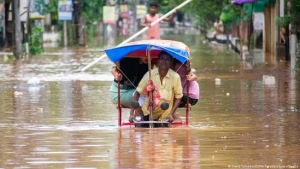GS3 – Environment

Context
The Indian Meteorological Department (IMD) has warned that climate change is narrowing India’s weather forecast window, making localised extreme weather events more unpredictable.
Nature of Extreme Weather Events
These are high-impact atmospheric phenomena that diverge sharply from established climatic patterns.
Types and Trends in India
Thermal and Atmospheric Extremes
- Heatwaves: Northern and central India’s core-heat zones are witnessing longer and more intense heat spells.
- Urban Heat: Metropolitan areas like Delhi-NCR face prolonged urban heatwaves, disrupting daily life.
- Thunderstorms: Increasing frequency of mesoscale convective systems, particularly in eastern and northeastern regions.
Hydrometeorological Hazards
- Extreme Rainfall: Central and southern India are experiencing more frequent short bursts of intense rainfall.
- Flash Floods: Cloudburst-induced floods are surging in Himalayan and northeastern hilly terrains.
- Lightning Deaths: Eastern and northeastern states are seeing more fatalities due to lightning.
Shifting Weather Systems
- Hailstorms: Central India faces increased hail and dust storms due to pre-monsoon convective activity.
- Cyclones: Sea-surface warming in the Arabian Sea is amplifying the intensity of cyclonic storms.
- Winter Rainfall Decline: A decrease in western disturbances is reducing snowfall and winter rain across northern India.
Contributing Factors
- Greenhouse Gases: Rising GHG emissions increase atmospheric energy, leading to severe weather events.
- Jet Stream Alterations: Disrupted upper-level winds destabilise weather systems.
- ENSO Impact: El Niño and La Niña affect monsoon variability, triggering alternating droughts and floods.
- Ocean Warming: Warmer seas contribute to short-duration, high-intensity rainfall episodes.
- Western Disturbance Weakness: Fewer disturbances are leading to longer dry spells.
- Land Use Changes: Deforestation and land alteration interfere with local climate systems.
- Urban Heat Islands: Cities experience exaggerated temperature extremes due to surface modifications.
Consequences
- Human Casualties: Over 3,200 lives were lost in 2024 alone due to extreme weather.
- Economic Losses: Climate-related disasters inflicted approximately $180 billion in macroeconomic losses.
- Agricultural Damage: Around 3.2 million hectares of crops were lost, destabilising food supply chains.
- Infrastructure Loss: Cyclones and floods repeatedly damage critical infrastructure and public utilities.
- Displacement: Thousands were forced to relocate due to weather disasters, overwhelming relief systems.
- Public Health Crisis: Increased cases of climate-sensitive illnesses and strain on health infrastructure.
- Insurance Sector Strain: Growing claims are placing stress on risk-pooling and insurance mechanisms.




